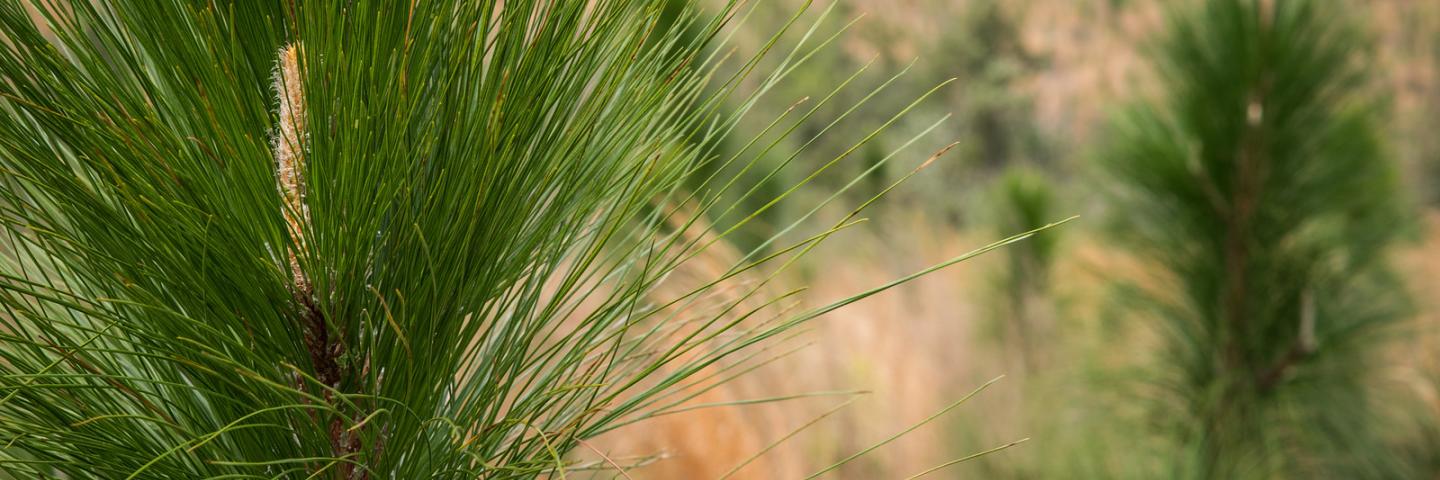Landscape Conservation Initiatives
NRCS uses Landscape Conservation Initiatives to accelerate the benefits of voluntary conservation programs, such as cleaner water and air, healthier soil and enhanced wildlife habitat.

Longleaf pine forests once encompassed more than 90 million acres across the Southeast, stretching from eastern Texas to southern Virginia.
Longleaf pine forests once encompassed more than 90 million acres across the Southeast, stretching from eastern Texas to southern Virginia. These forests represent some of the world’s most biologically diverse ecosystems and are home to nearly 600 plant and animal species, including 29 threatened and endangered species. But over the past two centuries, development, timbering and fire suppression reduced the ecosystem’s range by almost 97 percent.
NRCS works with agricultural producers and conservation partners to restore longleaf forests through the Longleaf Pine Initiative (LLPI), which was launched in 2010. Since 2010, NRCS has helped producers restore more than 870,000 acres on private lands. Together with other conservation efforts, the amount of longleaf pine forests has grown from approximately 3 million acres to nearly 5 million acres during this time, reversing a century-long decline across the region.

Through LLPI, NRCS works with producers on private lands in nine states to improve the sustainability of longleaf pine forests. NRCS provides technical and financial assistance to producers, helping them identify and implement a variety of conservation practices. These practices enable landowners to improve these unique forests by establishing new trees and maintaining the ecosystem using prescribed burning or other stand improvement techniques.
LLPI targets efforts in priority counties because of their favorable growing conditions and value in connecting existing stands of longleaf pine. Restoring adjacent stands and creating corridors between stands These targeted areas are usually located in the vicinity of a military installation, a national forest, national wildlife refuge, state forest or heritage reserve.
LLPI enables producers to make conservation improvements on their forestlands with NRCS providing technical and financial assistance. Sound forest management practices support healthy longleaf pine forests which are more resilient to wildfires, disease, and high wind events. One management practice that especially benefits longleaf pine ecosystems is restoring the natural fire regimes of the Southeast through prescribed burning. Historically, low intensity fires burned through longleaf pine forests every few years, maintaining an open canopy and diverse herbaceous understory.
The benefits of forest management practices range from producing high quality forest products, such as pole logs, to improved wildlife habitat. Many at-risk wildlife species such as the gopher tortoise, Louisiana pine snake, and red-cockaded woodpecker depend on longleaf pine forests for habitat. Healthier forests also offer other natural resource benefits, such as diverse recreation opportunities, better upstream forest water use efficiency, carbon storage, and healthier soil.
NRCS’ longleaf conservation efforts support those of America's Longleaf Restoration Initiative (ALRI), a collaborative effort that actively supports range-wide efforts to restore and conserve longleaf pine ecosystems. ALRI includes NRCS and its partners like the National Fish and Wildlife Foundation, The Longleaf Alliance, The Nature Conservancy, U.S. Department of Defense, U.S. Forest Service, U.S. Fish and Wildlife Service and others.
Matthew Vandersande, LLPI Coordinator, (202) 690-1588
In east Texas, the counties eligible for longleaf restoration are: Anderson, Angelina, Chambers, Cherokee, Hardin, Houston, Jasper, Jefferson, Liberty, Montgomery, Nacogdoches, Newton, Orange, Polk, Sabine, San Augustine, San Jacinto, Shelby, Trinity, Tyler and Walker.
Contact your local service center to start your application.
Do you farm or ranch and want to make improvements to the land that you own or lease?
Natural Resources Conservation Service offers technical and financial assistance to help farmers, ranchers and forest landowners.

To get started with NRCS, we recommend you stop by your local NRCS field office. We’ll discuss your vision for your land.
NRCS provides landowners with free technical assistance, or advice, for their land. Common technical assistance includes: resource assessment, practice design and resource monitoring. Your conservation planner will help you determine if financial assistance is right for you.
We’ll walk you through the application process. To get started on applying for financial assistance, we’ll work with you:
Once complete, we’ll work with you on the application, or CPA 1200.
Applications for most programs are accepted on a continuous basis, but they’re considered for funding in different ranking periods. Be sure to ask your local NRCS district conservationist about the deadline for the ranking period to ensure you turn in your application in time.
As part of the application process, we’ll check to see if you are eligible. To do this, you’ll need to bring:
If you don’t have a farm number, you can get one from USDA’s Farm Service Agency. Typically, the local FSA office is located in the same building as the local NRCS office. You only need a farm number if you’re interested in financial assistance.
NRCS will take a look at the applications and rank them according to local resource concerns, the amount of conservation benefits the work will provide and the needs of applicants. View Application Ranking Dates by State.
If you’re selected, you can choose whether to sign the contract for the work to be done.
Once you sign the contract, you’ll be provided standards and specifications for completing the practice or practices, and then you will have a specified amount of time to implement. Once the work is implemented and inspected, you’ll be paid the rate of compensation for the work if it meets NRCS standards and specifications.